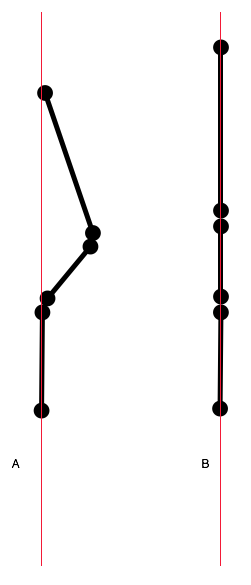I appreciate the help you've offered and the time you've taken, but as you know this thread is about my particular motion. It's not the Keys thread, and little of the stuff you typed seems directly relevant to my throwing motion and the top priorities, so I'm going to respond to the parts that seem relevant.
I will say though that I've got a fairly good understanding of physics and the problem with trying to apply simple Newtonian laws to bodies is that our bodies are not closed systems, and energy and forces can be applied from within.
JR said:
I would like to see a slo mo top down video of Dan.
I would to. It's possible Blake got his motion wrong.

Not specific to my throw, but a short comment.
JR said:
And do some homework and look for Jussi yourself. Final and one other round contain his throws in the FO2010.
I did go and look. I just didn't have the time to look through 24 videos for the two with him in them, and thought you might know which they were off the top of your head.
To get back to the bit about the knee/ankle/armpit and the vertical spine, you've said two things are true:
1) the knee, ankle, and armpit are in a vertical line (that's equidistant from the target)
2) the knees go from flexed to straight.
3) your spine is vertical to the ground
For those to both be true, you'd have a stick figure that looks like this (right upper, lower leg and spine shown):
In A the spine isn't vertical, and in B everything is vertical but the disc golfer here doesn't have his knees bent and doesn't appear to resemble many disc golfers that I've seen, plus he's expended energy in straightening not only his knee but his hips too.
It's a core tenet of our golf instruction that turning your shoulders in a circle (by keeping their center of rotation relatively still) is more efficient than turning them around a rotational center that's moving up and down or left and right, so I'm with you on that.
JR said:
The spine should be vertical at the hit for maximum power generation relative to the earth. When you throw like i describe in my signature you are always throwing the arm plane 90 degrees to the torso (with a straight spine) rotating on the center of the axis that is the heel pivoting.
If you're vertical to the earth, you're straight up and down from any angle, whether it's face-on or down-the-line. So when are you in position A? When are you in position B? In A the spine is not vertical to the earth (and if the arm and disc are horizontal, it's not perpendicular to them either).
I cannot envision a situation where the knee is bent, the ankle, knee, and armpit are in a line, and the spine is vertical. Can you?
And if the knees are bent, and you move from A to B during the throwing motion, how do you not stop the head from rising as much as it should from the loss of flex in the right knee and the hip joint?
Perhaps I'm brain farting here, or I'm supplying a constraint that doesn't exist, but that's why I asked those questions given your truths: the ankle/knee/armpit, the knee changing flex, and the spine vertical to the ground.
Just flat throws here. No anhyzer or hyzer stuff.
